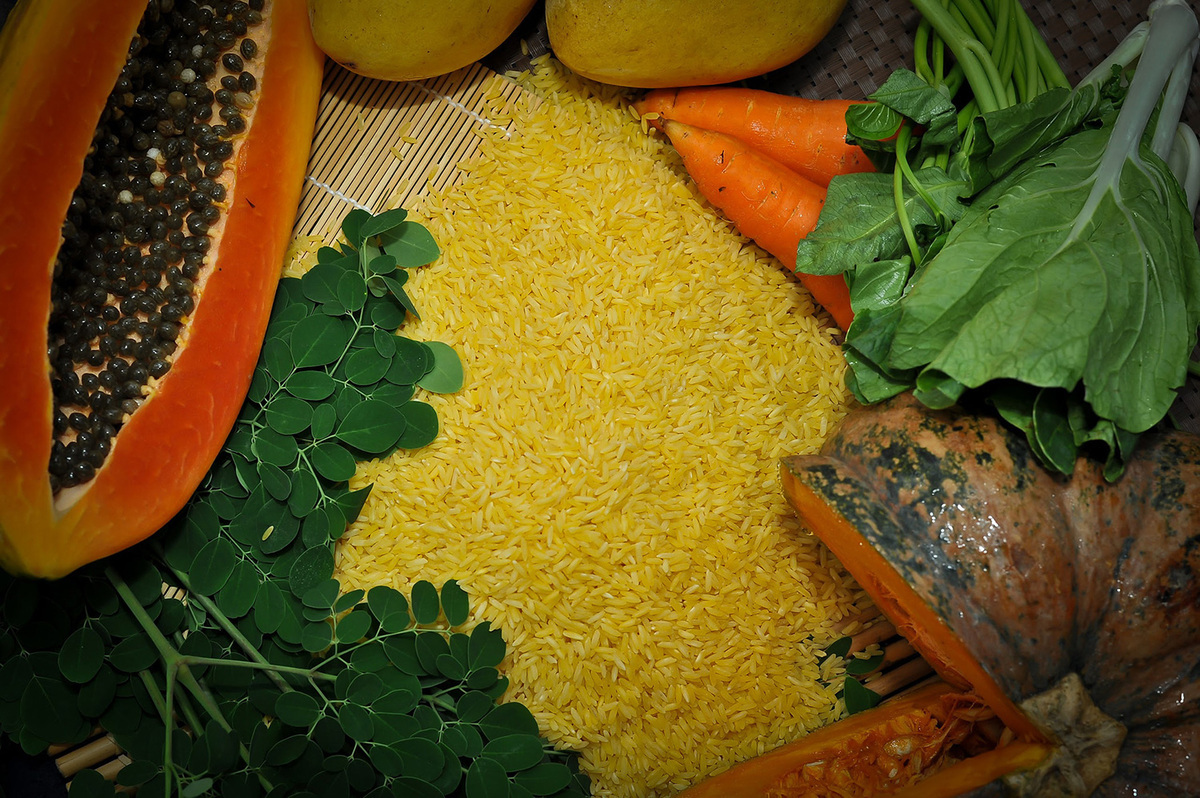Quarter Century of Golden Rice: Innovation and Impact in the Past 25 Years
| |
“This Rice Could Save a Million Kids a Year,” a Time Magazine article said after Golden Rice made a breakthrough in research, gaining significant media attention in 2000. Twenty-five years later, an article published in The Journal of Nutrition aimed to highlight the science behind the promise of better nutrition. Written by Dr. Amanda C. Palmer of Johns Hopkins Bloomberg School of Public Health, the critical review paper illuminates the development of Golden Rice (GR), regulatory status and reviews, consumer acceptance, nutritional impact, and challenges encountered by the GR Project. In this blog, the key points of the review paper were discussed.

How was Golden Rice developed?
Golden Rice started as a proof of concept developed by Ingo Potrykus of the Swiss Federal Institute of Technology and Peter Beyer of the University of Freiburg. They used Agrobacterium-mediated transformation to introduce two transgenes, namely psy derived from daffodil and crtI derived from the soil bacterium Pantoea ananatis, into the Kaybonnet rice. The analyses revealed that ß-carotene accounted for more than 90% of the total carotenoids. However, the first Golden Rice varieties were producing only ~2 µg of total carotenoids per gram of edible rice.
A subsequent research by Syngenta produced the second generation GR (GR2) carrying the Zmpsy1 transgene, which significantly improved phytoene production and enhanced carotenoid accumulation. The study revealed that some could accumulate 20–30 µg of total carotenoids per gram of milled rice at the time of harvest, ~80%–90% of which was ß-carotene. Syngenta made a subset of the GR2 lines freely available through the International Rice Research Institute (IRRI) for use in public sector breeding programs.
Among the donated Golden Rice lines, the GR2E transformation event was chosen due to its specific, stable insertion of DNA, which means that the genetic changes could be reliably passed on to future generations of plants. The results from the confined field trials conducted by scientists in Bangladesh and the Philippines showed that GR2E performed just like near-isogenic controls. Although carotenoid levels varied depending on the rice variety and growing conditions, the best-performing lines consistently had the highest levels, making them the top choice for future commercial planting.
Moving forward in 2022, the Philippine Rice Research Institute (PhilRice) registered the first variety of Golden Rice with the National Seed Industry Council and launched the deployment of Golden Rice, branded as Malusog Rice, which means “healthy” in Filipino.
What is the nutritional impact of Golden Rice?
Golden Rice contains high levels of ß-carotene at harvest, but similar to other biofortified crops, it experiences significant postharvest losses, often over 50%. Despite these losses, Golden Rice is expected to retain about 4-6 µg of ß-carotene per gram at the time of consumption. Studies suggest Golden Rice offers better vitamin A equivalence than other biofortified staples, which indicates that it shows great potential as a dietary source of vitamin A.
Studies estimate that replacing conventional rice with Golden Rice could significantly reduce VA deficiency (VAD). In a study in Bangladesh, Golden Rice could lower VA inadequacy by around 35% among women and children. Meanwhile, the impact in the Philippines and Indonesia was found to be lower, with a 20-25% reduction in VAD. Nevertheless, these findings highlight Golden Rice’s potential benefits to low-income populations that heavily rely on rice as a staple food.
In 2021, Golden Rice was approved for human consumption and commercial propagation in the Philippines. In the same year, a study on its nutritional impact was added to the Philippine Plan of Action for Nutrition Research Agenda. A large-scale randomized controlled trial was initiated to assess the impact of Golden Rice on 900 school-aged children. However, the implementation has been delayed due to ongoing legal challenges. If resolved in favor of Golden Rice, the trial is expected to proceed in 2026, potentially providing key data to guide regional and international strategies for VAD reduction.
What are the challenges faced by Golden Rice?
Since the 2000s, Golden Rice has faced challenges and persistent opposition from groups like Greenpeace and Magsasaka at Siyentipiko para sa Pag-unlad Agrikultura. Critics cite environmental concerns, particularly with the risk of genetic contamination with other rice varieties. Critics also claim that large amounts of Golden Rice must be consumed to meet vitamin A needs. However, the data used in their reference is outdated, as the new data shows that higher carotenoid content is present in second-generation varieties at two months post-harvest, and no vitamin A toxicity risks were identified.
Farmer adoption remains uncertain due to shifts in preferred rice varieties and potential competition from higher-yield alternatives. Research suggests that incentives, in the form of subsidies or guaranteed markets, could be needed to encourage adoption among farmers. Meanwhile, studies on consumer acceptance show favorable views on biofortified crops, but acceptance of transgenic crops heavily depends on positive messaging about nutritional benefits.
In 2022, the commercialization of Golden Rice in the Philippines was challenged in court. Two years later (2024), the Court of Appeals revoked the biosafety permit of Golden Rice and Bt eggplant for commercial propagation. The Decision orders PhilRice and IRRI to cease and desist from commercially propagating Golden Rice and conducting Golden Rice-related activities.
While vitamin A deficiency has declined in the Philippines and Bangladesh over the past two decades, food-insecure populations remain at risk of VAD. Golden Rice, with its enhanced vitamin A content, could still play a valuable role as a safety net for achieving vitamin A intake. If regulatory hurdles and public acceptance are addressed, Golden Rice could complement existing nutrition strategies and help safeguard the vitamin A status of at-risk groups.
For more information, read the full article in The Journal of Nutrition. For further reading:
- Golden Rice and Bt Eggplant Battle Court Order in the Philippines
- PhilRice Calls for Reversal of Court Decision on Golden Rice
- From Potential to Progress: Latest Developments in Golden Rice Deployment in the Philippines
| Newer Post | Archive | Older Post |
Science Speaks is ISAAA Inc.'s official blog. Weekly blog articles, authored by ISAAA writers, partners, and invited contributors, aim to help share, disseminate, and promote scientific knowledge and its vital role in achieving global agricultural sustainability and development. Your support to Science Speaks will help us achieve this goal. You can help us by donating as little as $10.

